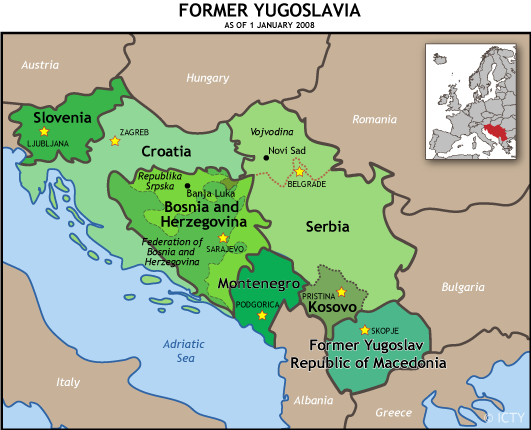
Today’s independent Southeast European states of Bosnia, Croatia, Serbia, and Montenegro were united for most of the twentieth century – together with Slovenia, Macedonia, and Kosovo – into the country of Yugoslavia, whose official language was Serbo-Croatian. Contemporary Bosnian, Croatian, and Serbian are spoken by about 17 million people and are nearly identical to each other in vocabulary and grammar, though they use different alphabets. Depending on one’s point of view, then, studying BCS offers three languages and two alphabets for the price of one course. Each student is free to choose one language for a focus, but quickly discovers that this does not prevent them from having a conversation with other students who are focusing on a different language.
The nuances between the languages of the former Yugoslavia mirror the richness of its cultures. As it was situated between the super-powers of the Habsburg and Ottoman empires before World War I, and between the capitalist west and communist east as part of the Non-Aligned Movement for most of the 20th century, the territory came to symbolize a bridge or crossroads between civilizations. It has produced great writers, such as the Nobel laureate Ivo Andrić, famous scientists, such as the inventor Nikola Tesla, and of course, world-class basketball and tennis stars.
The Department offers two full years of BCS followed by tutorials depending on student interest. Harvard is home to the famous Milman Parry Collection of Oral Literature, whose analysis of South Slavic epic songs influenced the interpretation of other great epics, such as the Iliad and the Odyssey, and Beowulf.